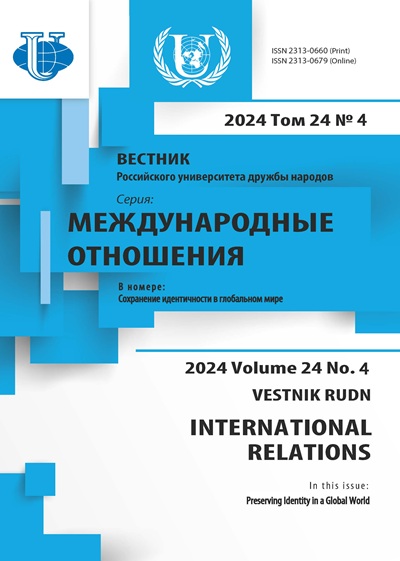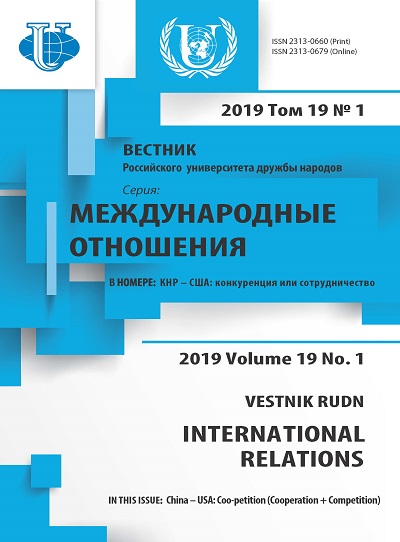Japanese Universities’ Community in International Environment: Maneuvers or Heading Down?
- Authors: Zhilina L.V.1
-
Affiliations:
- Dostoevsky Omsk State University
- Issue: Vol 19, No 1 (2019): China — USA: Coo-petition (Cooperation + Competition)
- Pages: 119-129
- Section: INTERNATIONAL EDUCATIONAL COOPERATION
- URL: https://journals.rudn.ru/international-relations/article/view/20856
- DOI: https://doi.org/10.22363/2313-0660-2019-19-1-119-129
Cite item
Full Text
Abstract
The article discusses the issues that striving for getting on the first lines of ratings, Japanese universities have faced to face with in recent years. Since 2003, when universities began to receive their public evaluation on the pages of global university ratings, the world university system has entered a new phase of its development. For many countries, including Japan, getting into the top-list of global ratings has become almost a national goal. Of the new issues that have emerged over the course of the past years, the most important at present is the “internationalization” of Japanese universities and the most obvious manifestations of this tendency are the increasing interest in world university rankings. At the same time in Japan internationalization has become both a universities and a government priority because it is seen as a sign of global competitiveness. Since 2000, the government has introduced a series of legislative and policy initiatives aimed at increasing institutional autonomy and management capabilities, enhancing evaluation and emphasizing quality, and developing internationally-competitive research via centres of excellence and graduate schools. To solve this problem the Japanese government decided to increase the number of international students from the current 100,000 to 300,000 by 2020. However now the ranking of Japanese universities is on a downward trajectory, as universities elsewhere in East Asia catch up. In order to become more competitive with universities in other countries, Japan needs to open up its universities and work positively to welcome more-and more talented-researchers and students from overseas, it also needs to increase the number of courses available in English. At the same time it needs to send more Japanese researchers and students overseas to stimulate their research and improve necessary for top-ranking standards.
About the authors
Larisa Vladimirovna Zhilina
Dostoevsky Omsk State University
Author for correspondence.
Email: larissa-zhilina@yandex.ru
PhD in History, Associate Professor, Foreign Languages Department, Dostoevsky Omsk State University
References
- Campbell, Ph. (2008). Escape from the impact factor. Ethics in Science and Environmental Politics, 8, 5—7.
- Denisov, Y.D. (2009). Japan in Innovation Race. Japan 2009, Yearbook, RAS, 88—102. (In Russian).
- Dezhina, I.G. (2016). Intersectotal Mobility of Researchers in Russia and the World. Vestnik RGNF, 1, 96—110. (In Russian).
- Eades, R.G. & Hada, Y. (2005). The ‘Big Bang’ in Japanese Higher Education: the 2004 Reforms and the Dynamics of Change. Sydney: Trans Pacific Press.
- Hazelkorn, E. (2011). Rankings and the reshaping of higher education: The battle for world-class excellence. Basingstoke: Palgrave Macmillan.
- Hudzik, J. (2015). Comprehensive Internationalization: Institutional Pathways to Success. New York: Routledge.
- Knight, J. (2003). Internationalization of Higher Education Practices and Priorities. Paris: International Association of Universities (IAU).
- Kuroda, K. (2016). Regionalization of higher education in Asia. In: The Palgrave Handbook of Asia Pacific Higher Education. Ed. by C. Collins, M. Lee, J. Hawkins, D. Neubauer. New York: Palgrave Macmillan, p. 141—156.
- Kuroda, K., Yuki, T. & Kang, K. (2014). The institutional prospects of cross-border higher education for East Asian regional integration: An analysis of the JICA survey of leading universities in East Asia. In: Emerging international dimensions in East Asian higher education. Ed. by A. Yonezawa, Y. Kitamura, A. Meerman & K. Kuroda. Dordrecht, Netherland: Springer, p. 55—79.
- Lawrence, P.A. (2008). Lost in publication: how measurement harms science. Ethics in Science and Environmental Politics, 8, 9—11.
- Macdonald, S., Kam, J., Aardvark et al. (2007). Quality journals and gamesmanship in management studies. Journal of Information Science, 33, 702—717.
- Mazurova, N.A. (2000). Federal educational programs as an instrument of US foreign policy: 1936—1999 [dissertation]. St. Petersburg. (In Russian).
- Ota, H. & Horiuchi, K. (2017). How accessible are English-taught programs? Exploring international admissions procedures. In: English-Medium Instruction in Japanese Higher Education. Ed. by A. Bradford & H. Brown. Bristol: Multilingual Matters, p. 108—129.
- Patterson, G. (2005). Collaboration/competition crossroads: national/supranational tertiary education policies on a collision course. Tertiary Education and Management, 11 (4), 355—368.
- Scott, P. (2000). Globalization and University. Alma Mater: Herald of Higher School, 4, 3—8. (In Russian).
- Rose, H. & McKinley, J. (2017). Japan's English-Medium Instruction Initiatives and the Globalization of Higher Education. Higher Education, 75 (1), 1—19.
- Varshavsky, A. & Komkina, T. (2011). Assessing the Impact on the Citation Index Rankings of Universities. Economy.
- Taxes. Low. Financial University under the Government of the Russian Federation, 3, 94—100. (In Russian).
- Voeykova, О.B. & Lukianova, А.А. (2013). Globalization of Educational Sphere and its Influence of the National Systems of Higher Education. Vestnik URFU, 3, 159—167. (In Russian).
- Yonezawa, A. (2012). Challenge for top Japanese Universities when Establishing a New Global Identity: Seeking a New Paradigm after “World-Class”. In: Institutionalization of World Class University in Global Competition. Ed. by J.C. Shin & B.M. Kehm. Springer, p. 125—143. doi: 10.1007/978-94-007-4975-7_8.
- Zhilina, L.V. (2015). Universities in Japan: Face to face to globalization. Asia and Africa Today, 3 (692), 19—24. (In Russian).











